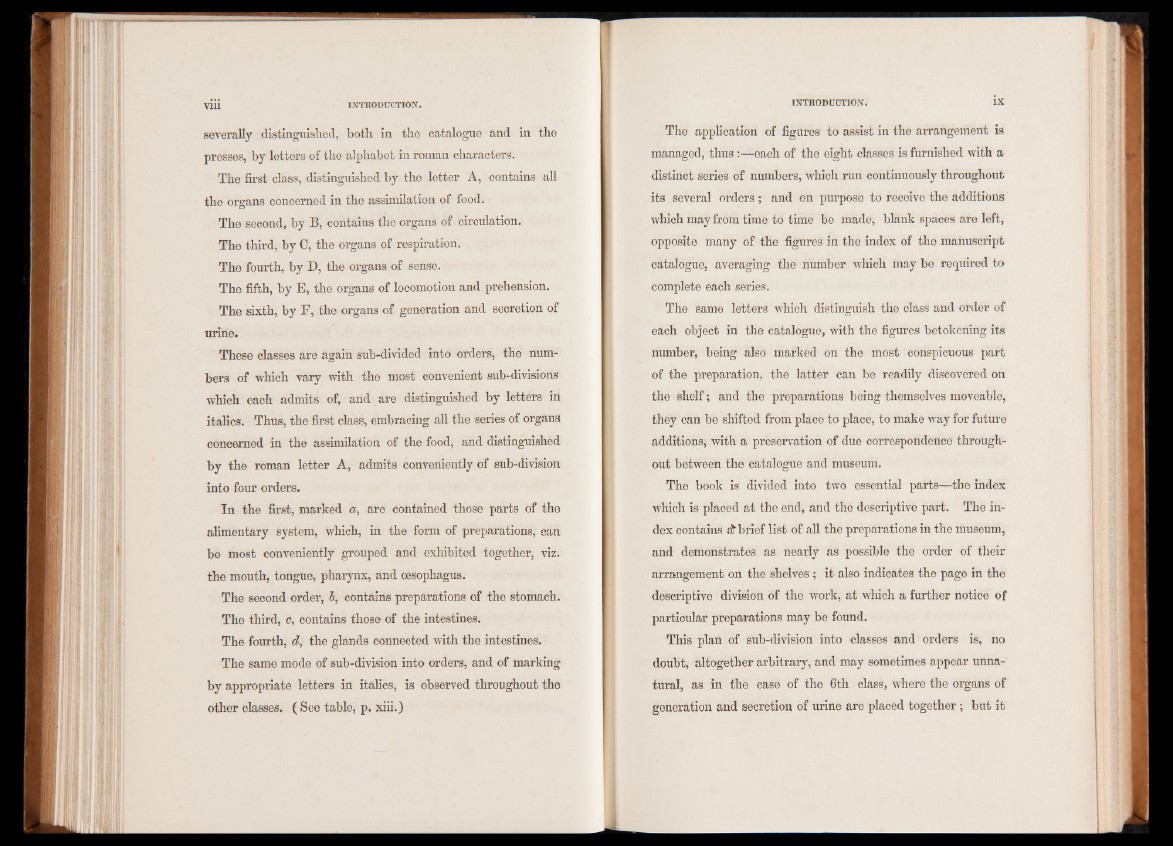
severally distinguished, both in the catalogue and in the
presses, by letters of the alphabet in roman characters.
The first class, distinguished by the letter A, contains all
the organs concerned in the assimilation of food.
The second, by B, contains the organs of circulation.
The third, by 0, the organs of respiration.
The fourth, by D, the organs of sense.
The fifth, by E, the organs of locomotion and prehension.
The sixth, by F, the organs of generation and secretion of
urine.
These classes are again sub-divided into orders, the numbers
of which vary with the most convenient sub-divisions
which each admits of, and are distinguished by letters in
italics. Thus, the first class, embracing all the series of organs
concerned in the assimilation of the food, and distinguished
by the roman letter A, admits conveniently of sub-division
into four orders.
In the first, marked a, are contained those parts of the
alimentary system, which, in the form of preparations, can
be most conveniently grouped and exhibited together, viz.
the mouth, tongue, pharynx, and oesophagus.
The second order, 5, contains preparations of the stomach.
The third, c, contains those of the intestines.
The fourth, d, the glands connected with the intestines.
The same mode of sub-division into orders, and of marking
by appropriate letters in italics, is observed throughout the
other classes. ( See table, p. xiii.)
The application of figures to assist in the arrangement is
managed, thus :—each of the eight classes is furnished with a
distinct series of numbers, which run continuously throughout
its several orders; and on purpose to receive the additions
which may from time to time be made, blank spaces are left,
opposite many of the figures in the index of the manuscript
catalogue, averaging the number which may be required to
complete each series.
The same letters which distinguish the class and order of
each object in the catalogue, with the figures betokening its
number, being also marked on the most conspicuous part
of the preparation, the latter can be readily discovered on
the shelf; and the preparations being themselves moveable,
they can be shifted from place to place, to make way for future
additions^ with a preservation of due correspondence throughout
between the catalogue and museum.
The book is divided into two essential parts—the index
which is placed at the end, and the descriptive part. The index
contains & brief list of all the preparations in the museum,
and demonstrates as nearly as possible the order of their
arrangement on the shelves ; it also indicates the page in the
descriptive division of the work, at which a further notice of
particular preparations may be found.
This plan of sub-division into classes and orders is, no
doubt, altogether arbitrary, and may sometimes appear unnatural,
as in the case of the 6th class, where the organs of
generation and secretion of urine are placed together; but it